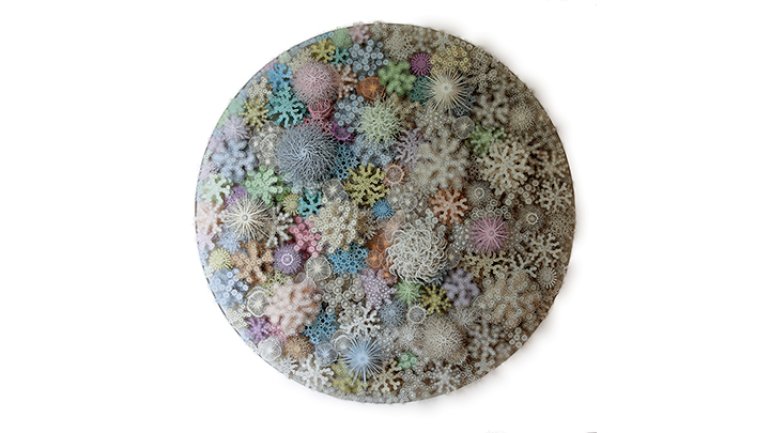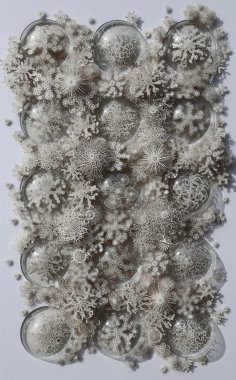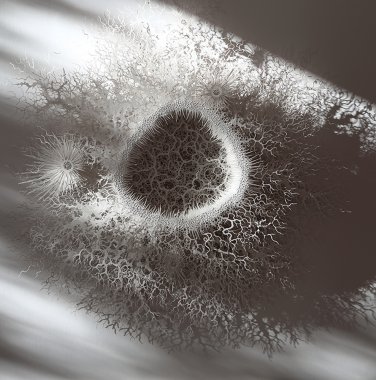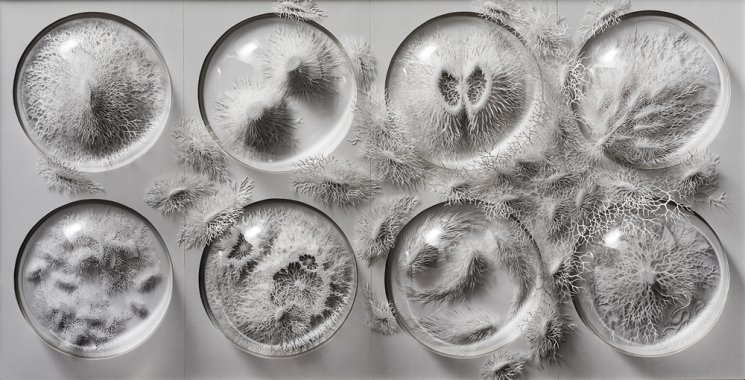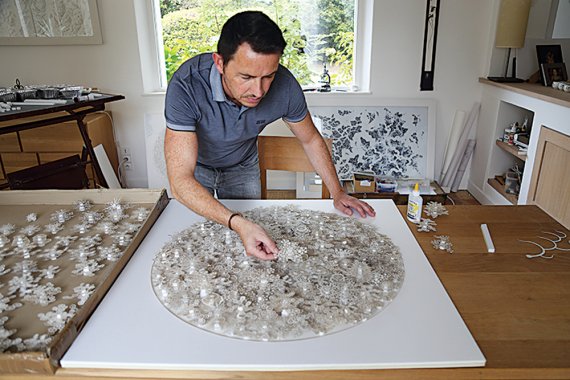Micro Magic
Micro Magic
“I got into it by chance,” Rogan Brown says. It’s a funny way to describe how he started making his intricate paper sculptures of microbiological forms. But it’s true: The 52-year-old didn’t get his start by chasing a certain technique, but rather from a love of the natural world, down to its finest details. As a child growing up in suburban England, he’d see “perfectly manicured gardens and parks,” but he spent his holidays hiking in wilder areas; in 2004, he moved to the Cévennes mountains in southern France. “It was from there that these sculptures first emerged,” Brown says. (He now lives in Nîmes, about 40 miles away.)
Over the past decade, Brown has made models of cell structures, microbiomes, fossils, and anything else you might find in a petri dish. He dramatically expands the proportions of the microscopic, taking the sort of scientific complexity we all know exists and magnifying it. He’s always seen nature as a blend of science and art. “What emerges finally,” he says, “is surreal science, an imagined representation from someone who is quite clearly not an expert … but who is fascinated by the aesthetic and conceptual possibilities.”
“Surreal science” is an apt description. Pieces like Portal (2015), a kind of narrowing tunnel, and Magic Circle Colour (2018), a cytological version of a coral reef, look like textbook diagrams brought to life. “Art is the midwife of science,” Brown says, noting that before photography was invented, naturalists had to draw their observations to show their peers. His pieces have won him acclaim – he’s been featured on the Colossal blog and the cover of American Scientist magazine – and a busy, globe-spanning exhibition schedule.
The precision with which Brown creates these sculptures feels as scientific as it does artistic. He begins by sketching out the work, then uses a scalpel or laser to cut it apart. Next he mounts the delicate pieces on spacers that he glues in place to give the work depth. (Paper, he says, has “amazing structural properties – aesthetically and structurally just right” for sculpture.)
The labor-intensive process takes months, but Brown treasures the details. “Sculpture creates a more powerful, direct visual experience than 2D work,” Brown says, “because it is not the representation of an object; it is the object itself.”
Most people may not think of the microbial world as beautiful, but for Brown, that’s the point. “I aspire ultimately to make works of art that transport us from the mundane reality of day-to-day life,” he says, “and remind us of the immensity of the universe that surrounds us on both the macro and micro level.” The astonishment that his work provokes is twofold. First is the response to the structure itself, the seemingly endless curves and crevices and patterns. Next comes the realization that similar structures exist in almost everything we look at.
Although Brown loves the microscopic, he doesn’t want to focus on it exclusively. He plans eventually to work on larger pieces that will focus on another everyday marvel: the human body. In this case, too, the motivation will be not a technical challenge but an invigorating idea; he conceives of the body as a kind of “elaborate, biodiverse ecosystem – a human reef.”
In the meantime, Brown will continue to expand and illuminate the invisible – to bring to light the small elements that build up larger majesty. With paper, knife, laser, and glue, he reveals what he calls “the sublime intricacy and variety of nature.”


